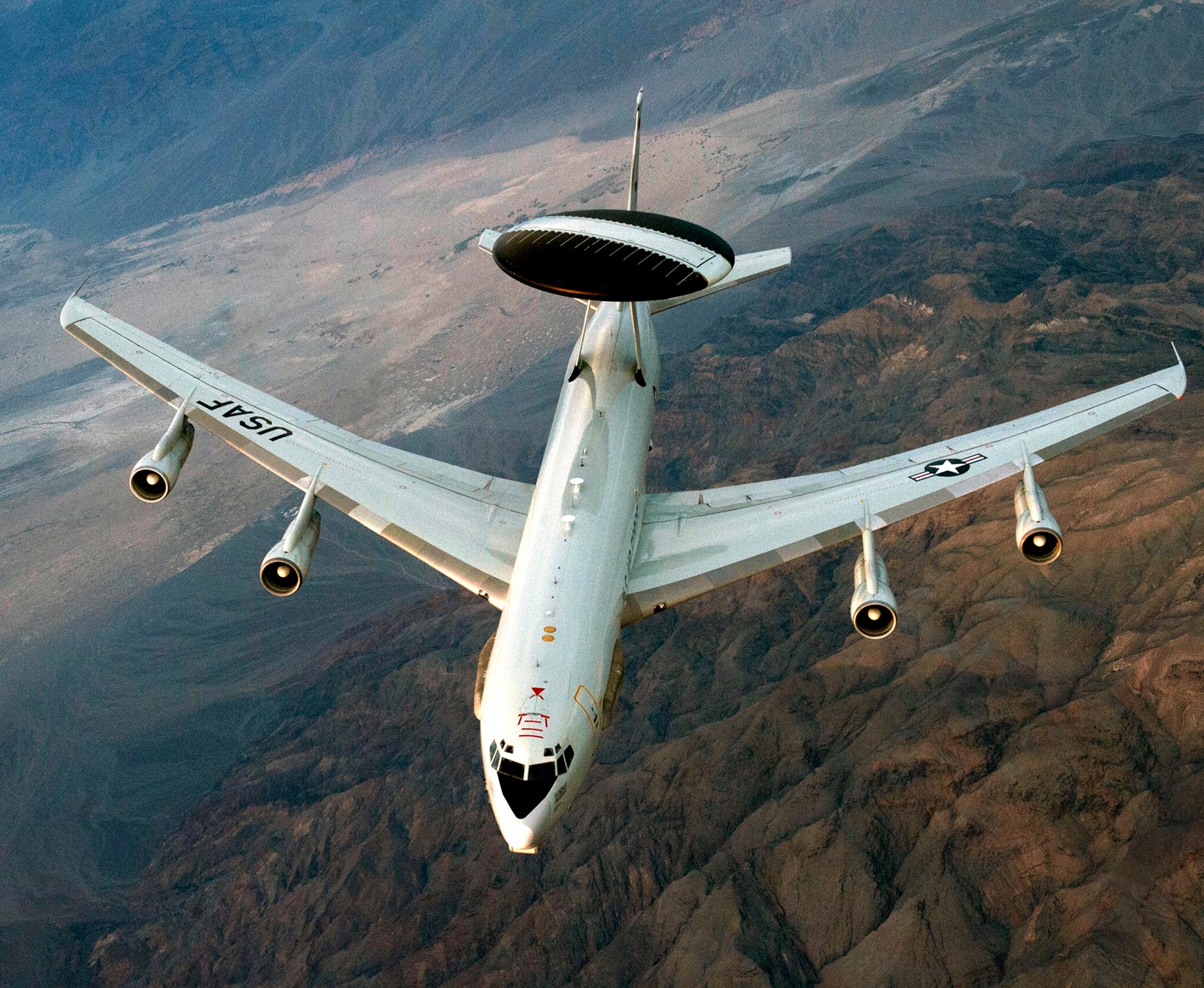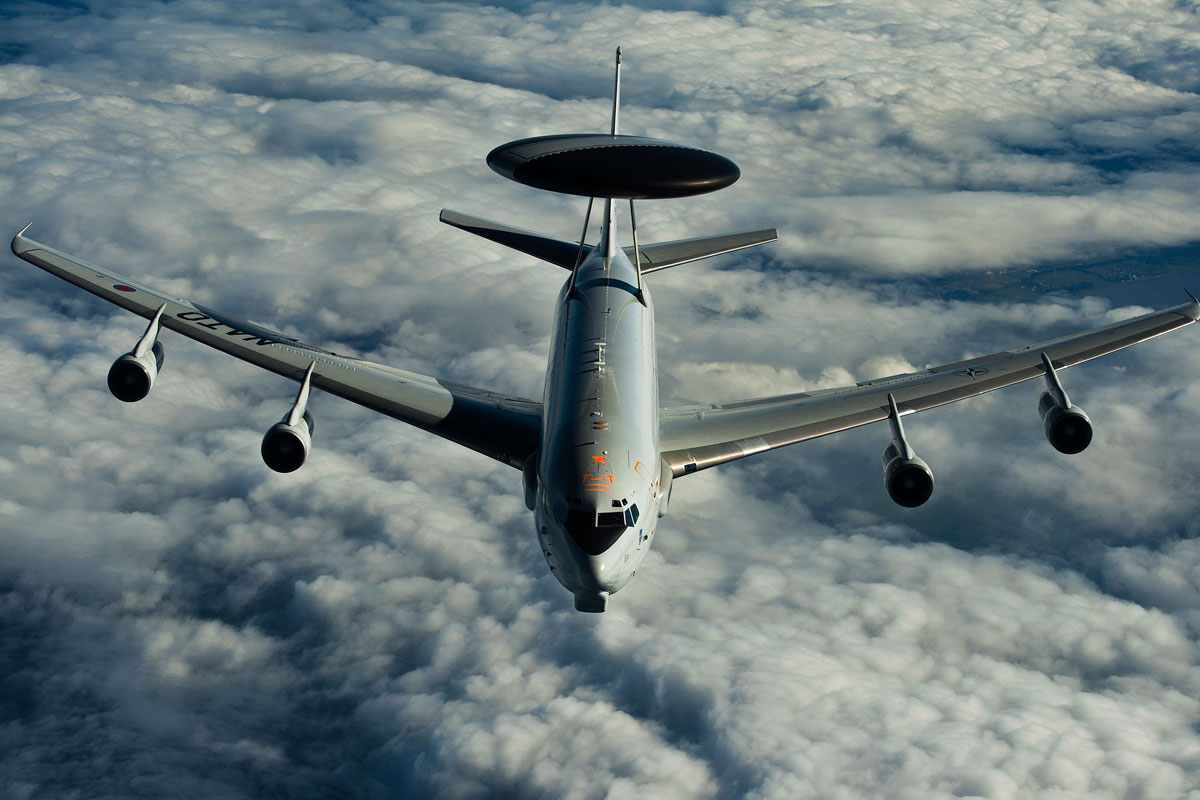In the dynamic theater of airborne command and control, the E-3 Sentry, also known as the AWACS (Airborne Warning and Control System), stands as a flying control tower, orchestrating operations with unparalleled sophistication. Stepping into the E-3’s domain unveils a world where the skies are not just navigated but commanded.

The E-3 Sentry, with its distinctive radar dome mounted on top, is a symbol of airborne dominance. Commissioned in the 1970s, the AWACS platform has evolved into a linchpin of aerial surveillance and command capabilities. It serves as an airborne hub, extending the eyes and ears of military commanders across vast airspace.

Entering the E-3 Sentry, one encounters the technological marvel that forms its core—the radar system. Housed within the distinctive rotating dome, the radar is the sentinel’s keen eye, capable of detecting and tracking aircraft and missiles over great distances. This capability transforms the E-3 into a flying command post with unparalleled situational awareness.

The cockpit of the E-3 is not just a control center; it’s a command hub where operators orchestrate the aerial symphony. With a suite of advanced avionics, communication systems, and radar displays, the crew inside the E-3 can monitor, assess, and direct air operations with precision. The hierarchical arrangement allows for efficient collaboration among crew members, ensuring a seamless flow of information.

Flying aboard the E-3 Sentry means extending the horizon, both literally and figuratively. The aircraft’s radar provides a 360-degree view of the airspace, allowing operators to surveil and track multiple targets simultaneously. This capability is not just about monitoring; it’s about providing critical intelligence for strategic decision-making.
Inside the E-3, the crew assumes the role of aerial chessmasters, directing the pieces on the three-dimensional chessboard of the sky. Through real-time communication with ground-based control centers and other airborne assets, the AWACS crew manages the flow of friendly and adversary aircraft, optimizing the overall effectiveness of air operations.
The E-3 Sentry isn’t confined to national borders; it’s a global asset. Participating in joint exercises, coalition operations, and international collaborations, the AWACS platform extends its influence across the skies, fostering interoperability and collective security.
Flying the E-3 Sentry means maintaining prolonged command presence. With in-flight refueling capabilities, the AWACS can loiter in the air for extended durations, providing continuous surveillance and command support for ongoing operations.
Inside the Air Force’s flying control tower, the E-3 Sentry is not just an aircraft; it’s a testament to aerial command excellence. From its radar mastery to its role as a battle management hub, the AWACS platform exemplifies the fusion of technology, strategy, and skilled operators. As it patrols the skies, the E-3 Sentry remains a symbol of airborne command and control, ensuring that the Air Force maintains not just presence but mastery over the vast expanse of the aerial domain





